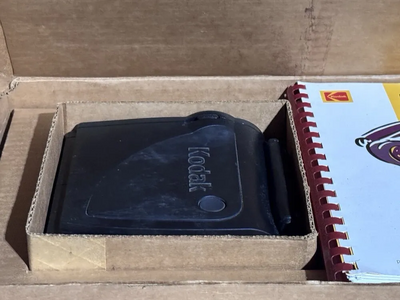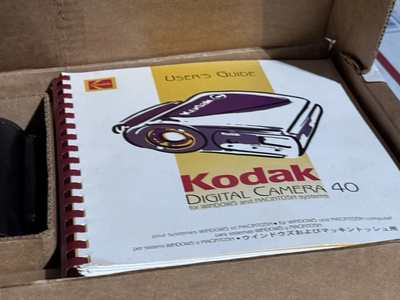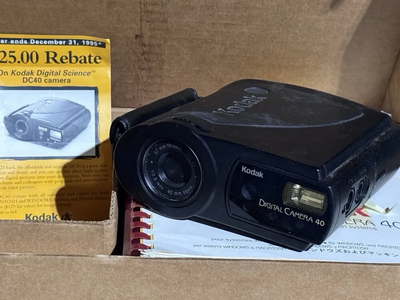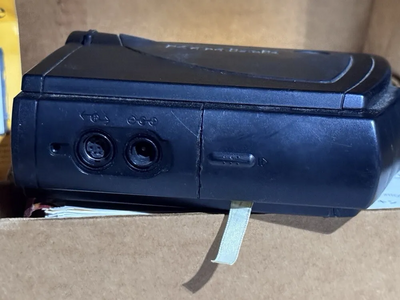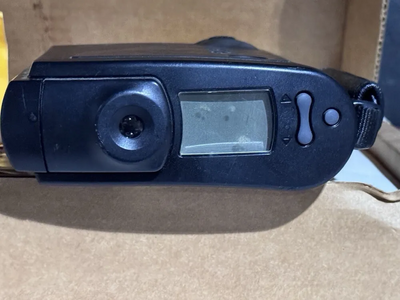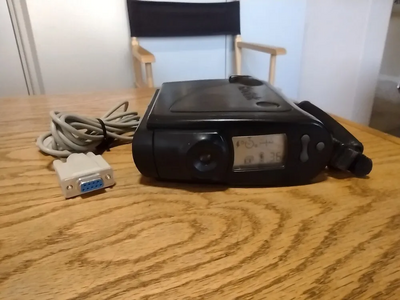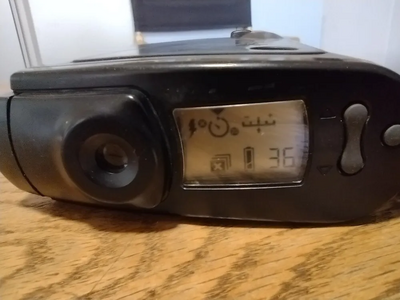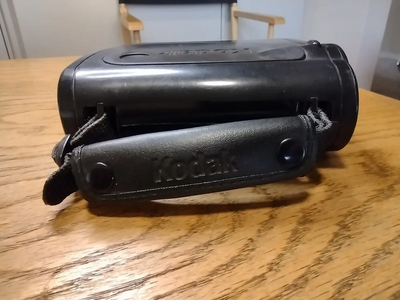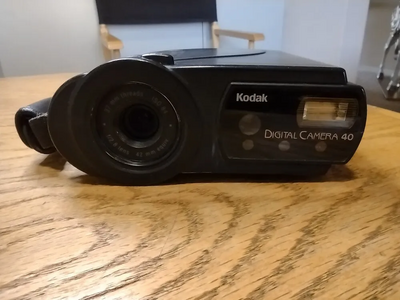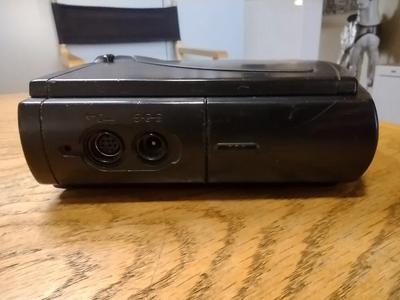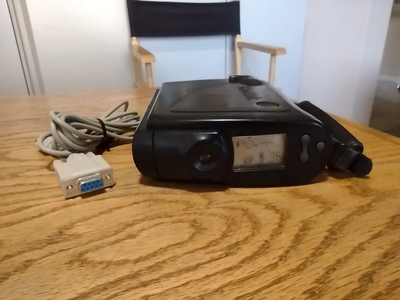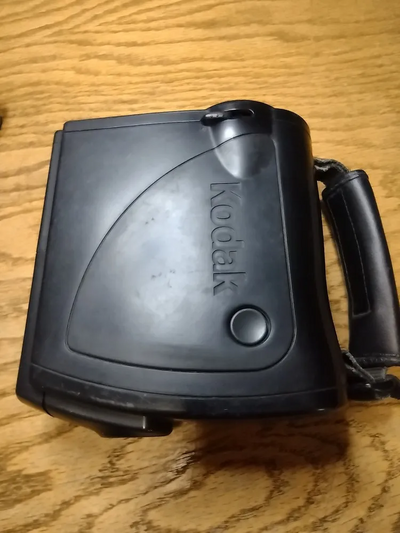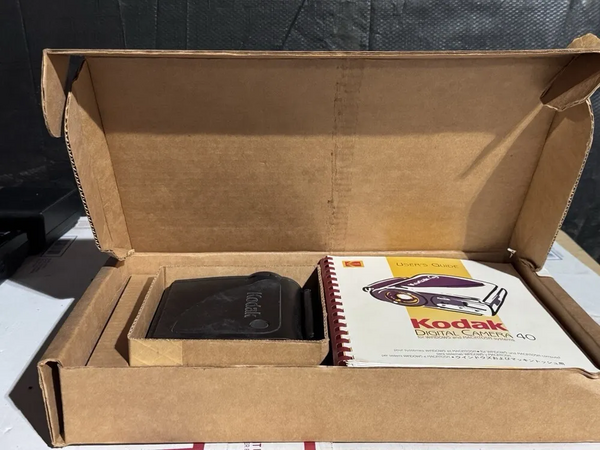
KODAK DC40
| Brand | KODAK 1999 |
| Model | DC40 |
| Released Year | 1999 |
| Type | DSLR Cameras |
| Series | DC |
| Color | Black |
| Optical Zoom | 3x |
| Status | Discontinued |
Quick view
Overview
The Kodak DC40 is an early consumer digital camera introduced in 1999, featuring a 1.3-megapixel CCD sensor capable of capturing images at a resolution of 1280 x 960 pixels. It uses proprietary digital storage media and supports JPEG image format for efficient compression. The camera offers manual and automatic control settings, including exposure adjustment and white balance. It includes a 3x optical zoom lens and a built-in flash, providing versatility in various lighting conditions. The interface for image transfer is via a serial port, reflecting the technology standards of its time. The device is powered by rechargeable batteries, designed for moderate usage duration tailored to early digital camera requirements.
Specifications
| Maximum Aperture | f/2.8 |
| Type | Digital SLR |
| Screen Size | n/a |
| Maximum Resolution | 0.4 MP |
| Color | Black |
| Model | Kodak DC40 |
| Connectivity | 8-pin DIN cable |
| Country/Region of Manufacture | Japan |
| UPC | 0041771911829 |
| Series | Kodak DC |
| MPN | DC40 |
| Features | Auto Power Save |
| Battery Type | AA |
| Item Weight | 16 Oz. |
| Digital Zoom | 1x |
| Optical Zoom | 3x |
Images
Key Advantages
The Kodak DC40 offers several key advantages despite its early design. Its 1.3-megapixel resolution was considered high for consumer models at the time, providing good image detail. Ergonomic design makes the camera comfortable to hold and operate. The inclusion of both manual and automatic controls gives users creative flexibility. The 3x optical zoom enhances composition options without loss of image quality. Its compact size makes it portable for everyday photography. The built-in flash allows for better image capture in low light environments.
Limitations
The Kodak DC40 has limitations characteristic of late 1990s technology. Its serial port image transfer is considerably slower compared to modern USB standards. Battery life is limited by early rechargeable battery technology, requiring frequent recharging. The camera's proprietary storage solution limits compatibility with other devices. Image processing and low-light performance are inferior to contemporary digital cameras. The lack of live view LCD limits framing of shots compared to newer models. Additionally, the weight is higher than later compact digital cameras due to older component materials.
FAQ
When was the Kodak DC40 released?
The Kodak DC40 was released in 1999.
What is the image resolution of the Kodak DC40?
It features a 1.3-megapixel sensor providing a maximum resolution of 1280 x 960 pixels.
Does the Kodak DC40 support optical zoom?
Yes, it includes a 3x optical zoom lens for image composition.
What kind of storage media does the Kodak DC40 use?
The camera uses proprietary digital storage media specific to Kodak's designs at the time.
How are images transferred from the Kodak DC40 to a computer?
Images are transferred via a serial port connection, which is slower than current USB interfaces.
Is the Kodak DC40 still in production?
No, the model has been discontinued for many years.
What are typical battery requirements for the Kodak DC40?
It uses rechargeable batteries designed for moderate usage duration, typical of late 1990s digital cameras.
Disclaimer
The content on is provided for general informational purposes only. We do not guarantee the accuracy, completeness, or reliability of any information, specifications, or visuals presented on the site.
is not responsible for any content, images, or data uploaded or shared by users. Users are solely responsible for the content they submit.
We may include links to third-party websites for convenience. We do not endorse or take responsibility for the content or policies of any external sites.
Use of the site is at your own risk. Always verify critical information independently before making decisions based on content from this website.

